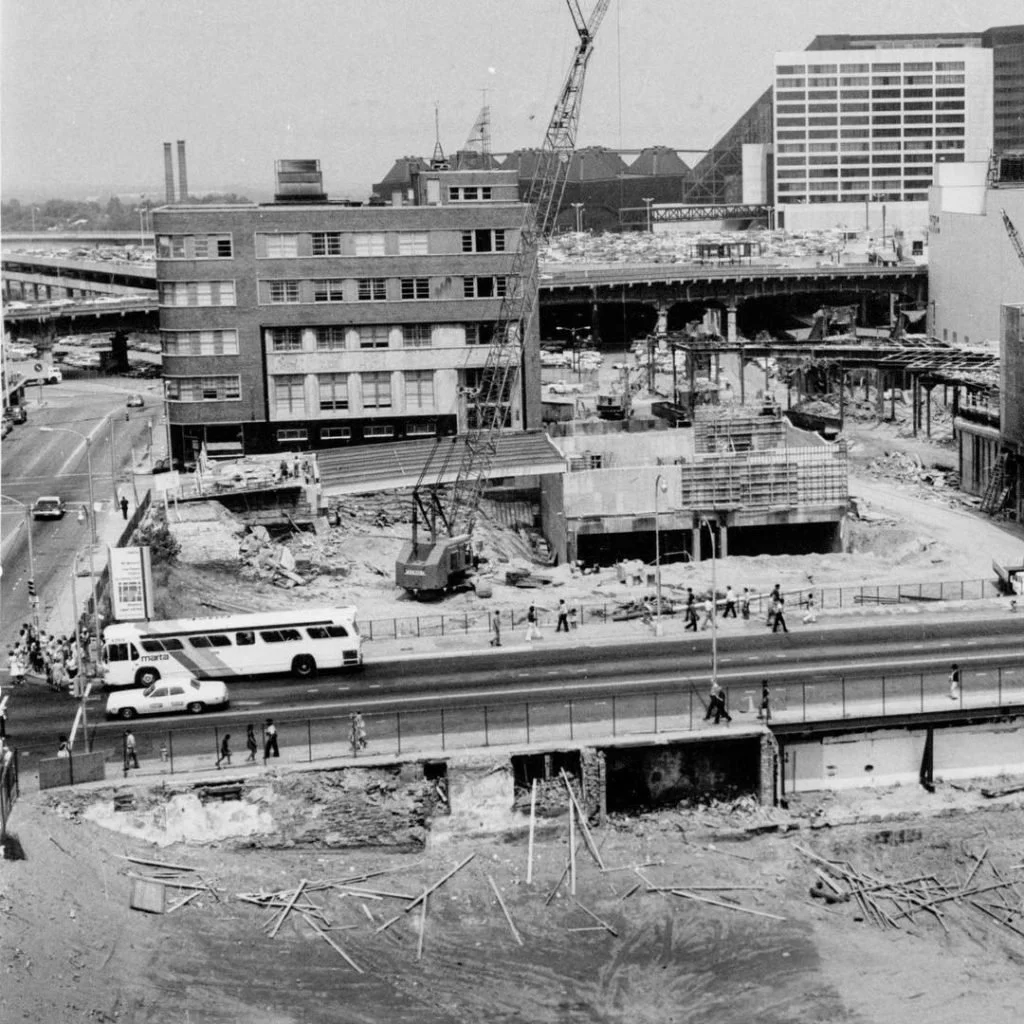A look at the proposed overhaul of Five Points MARTA Station
MARTA's Five Points Station is slated for a major overhaul -- one that might reconnect the north and south sections of Broad Street while making way for development on the property.
Atlanta City Studio (an initiative of the Dept. of City Planning) has asked the transit agency to reopen Broad Street, which is interrupted by the street-level canopy atop the station. MARTA is currently studying the feasibility of removing the canopy and patching the streets back together. They're also exploring the possibility of "dropping columns" to support development over the station.
The Studio has been working on this proposal with MARTA since September and has reportedly been encouraged by the transit agency's reaction. Encouragement is definitely needed, since the entire project will have to meet a delivery date prior to the start of the World Cup in 2026.
The city's planning department has shared a document with us highlighting the significant potential for improving Downtown's urban fabric through this proposal. Let's take a look at what the result could be. Here's the current canopy that appears to create a dead end for Broad at its intersection with Alabama Street in Downtown...
The current Five Points Station canopy that disrupts the flow of the street and of the surrounding Downtown fabric of buildings.
Instead of that disjointed and disruptive structure seen above, we could have a seamless path for pedestrians and a continuation of the type of buildings that bring vibrancy to the city...
Seamless Broad Street
Image from the Pre-Design Concept Proposal for Five Points MARTA Station, City of Atlanta Department of City Planning/Atlanta City Studio.
The proposal document claims that the development potential of these blocks above the MARTA station is "immense," and it's hard to disagree. Replacing this concrete canopy with open public space and towers would be an incredible transformation in the historic heart of the city.
It also says that the small size of the blocks would "break the development opportunity into smaller, bite-sized pieces" for the kind of incremental urbanism that Downtown Atlanta's historic structures were built on (as opposed to the large stretches of land that often end up as mega developments). Here's where the new construction could happen, in the blue areas with diagonal lines, below:
Broad Street from above.
Image from the Pre-Design Concept Proposal for Five Points MARTA Station, City of Atlanta Department of City Planning/Atlanta City Studio.
Sadly, the construction of the train station played a major role in the loss of many old city-block buildings from Atlanta's past. In the photo below from the late 1970's, you can see the site of the demolition as the station construction begins. That’s the Constitution Building on the left. The street in the middle, with the bus, is Broad. It used to connect straight through between the north and south sides. Now it’s dissected into two distinct parts because of the canopy for the train station.
Broad Street 1970s
Broad Street (with the MARTA bus on it) in the 1970s during the construction of the Five Points MARTA Station. Source: GSU Digital Collections.
This gives you a look at how incredibly disruptive this construction was to the Five Points urban fabric. This station marked a big, positive investment but also a massive loss of buildings.
Below is a look at what Broad Street looked like in the early 1970s before the buildings were demolished to make way for the train station. You're looking north from Alabama Street at the exact spot where the station's canopy now sits.
Broad Street 1970s
The section of Broad Street where the Five Points Station now sits (looking north), before the old buildings were demolished for MARTA construction. Source: GSU Digital Collections.
Repairing the lost urban fabric with a new street-grade path for pedestrians, which would continue south from Barbara Asher Square (the plaza that abuts the station to the north), is a great idea for promoting better urbanism for 21st Century Atlanta, as is the proposal for new development. This is a fine example of the way Atlanta City Studio can work with MARTA and other entities to help reimagine places in ways that better capture their value, and better serve our goals for the city we want to build.
"The relationship between the City and MARTA is an important one," says city planning chief Tim Keane. "The way to bring more transit riders to MARTA is to create great spaces. Yes, of course it's about headways, but it's also making sure people want to walk there. Our position is that if you repair this space, it's a public investment - not just a transit investment."






